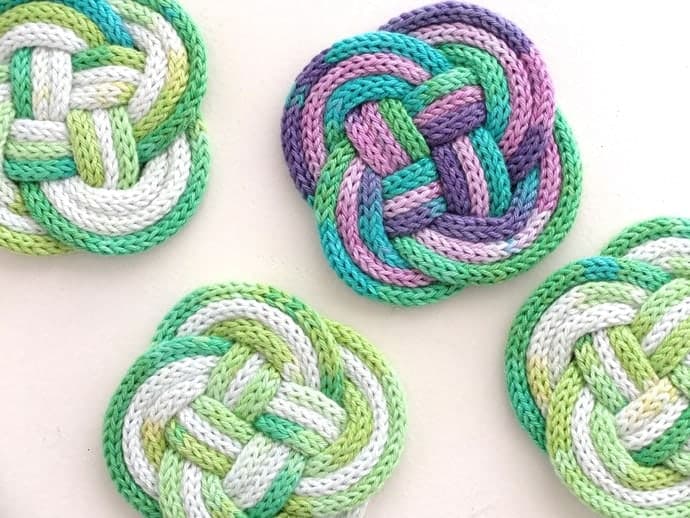French Knitting for Beginners: A Step-by-Step Guide for Crafty Parents
Welcome, crafty parents! Are you looking for a cozy, creative activity to share with your little ones? French knitting, also known as spool knitting or corking, is a fabulous way to introduce the intricate world of knitting to children—and it’s super fun for adults, too!
In this beginner-friendly guide, we’ll unravel the secrets of French knitting and show you how to create wonderful knits with your kiddos. Whether it’s a soft toy snake, a chic bracelet, or even a multi-colored coaster, the possibilities are truly endless!
What is French Knitting?
French knitting is a simple form of knitting that uses a hollow cylinder or “dolly” with pegs at the top to produce a narrow tube of fabric. It’s an excellent stepping stone towards traditional knitting, and it helps develop fine motor skills, patience, and creativity in children.
Materials You’ll Need
- French Knitting Doll: These can be found at your local craft store or online. They come in various shapes and colors, making them extra engaging for kids.
- Yarn: Choose some colorful yarn. Wool or acrylic are perfect for beginners. Consider the weight of the yarn—lighter weights work well for small projects.
- Knitting Needle or Crochet Hook: This is used to hook the yarn over the pegs of the dolly.
- Scissors: For cutting the yarn when you finish your project.
Getting Started with French Knitting
Before diving into the world of French knitting, it’s important to set aside a comfortable workspace where you and your child can work without interruptions. Once you’re all set, follow these simple steps:
- Preparing the Yarn: Start by taking the end of your yarn and threading it through the center of the dolly from top to bottom. Leave a tail of about 4-6 inches hanging from the bottom—this will help you later on.
- Securing the Yarn: Hold the tail at the bottom with your thumb to secure it, and then wrap the yarn around each peg going in a clockwise direction. Make sure to wrap the yarn somewhat loosely so it doesn’t become too tight to work with.
- Creating the First Row: After wrapping the yarn around each peg, loop the yarn around the pegs a second time. Then, using your knitting needle or crochet hook, pull the bottom loop over the top loop and over the peg head, leaving the top loop on the peg. This will create your first row of stitches.
- Continuing the Knitting: Keep wrapping and looping in the same manner. As you progress, you will see your knitted tube begin to emerge from the bottom of the dolly. Gently pull it through to ensure even tension.
As you work on your French knitting project with your child, it’s a wonderful opportunity to bond and enjoy the therapeutic benefits of crafting. Not only will your kids develop a new hobby, but they’ll also gain a sense of accomplishment as they watch their project grow!
Moreover, don’t forget to take this time to encourage their creativity. Allow them to pick their yarn colors and decide what they’d like to create. Maybe today it’s a simple necklace, but who knows? Tomorrow it might be an elaborate piece of art!
Now, keep those knitting needles ready, because we’re about to delve even deeper into the captivating process of French knitting. Get set to watch your child’s imagination take flight, stitch by wonderful stitch!
Stay tuned, as we’ll explore more advanced techniques, fun project ideas, and tips to make your French knitting experience truly magical. Happy knitting!

5 Things Parents Should Know in Preparing for French Knitting
- Choosing the Right Tools: When selecting a French knitting doll, look for one that feels comfortable in your child’s hand. If your child is particularly young, you may want to choose one with larger pegs, which are easier to manipulate. Similarly, a chunkier needle or hook can make the learning process simpler for little fingers.
- Selecting Yarn: It can be tempting to go for the cheapest options when choosing yarn, but consider the texture and ease of use. Soft, brightly colored yarns can motivate kids and are gentle on their hands. Avoid yarns that split easily, as they can cause frustration during the learning process.
- Practicing Patience: French knitting is a fantastic way to teach kids patience and perseverance. Projects can take time, especially for beginners, so it’s important to set realistic expectations and celebrate small victories along the way.
- Cultivating Creativity: Encourage your child to think outside the box. Once they’ve mastered the basics of French knitting, they can experiment with different yarn colors and textures or even embellishments like beads or buttons to make their projects unique.
- Safety First: When crafting with your children, always prioritize safety. Make sure scissors are used with care and that smaller children are supervised when cutting yarn. Also, check that all tools are in good condition to prevent any unexpected accidents.
Taking the Next Step in French Knitting
Once you and your little crafters have the hang of basic French knitting, it’s time to explore new horizons. There are endless projects and patterns available, specifically designed for French knitting. From creating adorable animals and dolls to making practical items like coasters and dishcloths, you can really let your creativity shine through.
Furthermore, French knitting can be a gateway to more advanced knitting or crochet projects. As your child’s skills and confidence grow, you can introduce them to different types of stitches and more complex patterns. This progression can help maintain their interest and keep the activity challenging and engaging.
Turning Projects into Play
It’s a joyous moment when you can transform the fabric tubes your kids have worked hard to create into something playful and functional. Here are a few ideas to get you started:
- Toy Snakes: Fill a knitted tube with stuffing and add felt for eyes and a tongue to bring a cute critter to life.
- Bracelets: Join the ends of a short tube together, and voilà, you have a homemade piece of jewelry.
- Jump Ropes: Braid several tubes together for a sturdy and colorful jump rope that’s perfect for outdoor play.
Remember, the skills learned through French knitting aren’t just for creating tangible items. They help in cultivating a mindset that appreciates the value of homemade crafts, attention to detail, and the joy of creating something from scratch. Each project that your child completes will be a reflection of their dedication and your loving guidance.
As they carry on knitting, they’ll learn more than just a craft—they’ll imbibe life lessons in patience, creativity, and the satisfaction of seeing a task through to completion. These experiences are the threads that, when woven together, create the rich tapestry of childhood memories.
So, set forth on this delightful adventure with needles in hand, threads at the ready, and hearts open to the endless possibilities that French knitting offers. Let the clacking of pegs become the rhythm of warm, family bonding moments, and may each piece your child creates be a stitch in the fabric of their cherished childhood experiences.
Embrace the creativity, enjoy the process, and most of all, have an utterly wonderful time sharing the magic of French knitting with your children. Happy knitting!
See more great Things to Do with Kids in New Zealand here. For more information see here
Disclaimer
The articles available via our website provide general information only and we strongly urge readers to exercise caution and conduct their own thorough research and fact-checking. The information presented should not be taken as absolute truth, and, to the maximum extent permitted by law, we will not be held liable for any inaccuracies or errors in the content. It is essential for individuals to independently verify and validate the information before making any decisions or taking any actions based on the articles.




